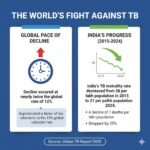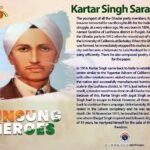The Prime Minister inaugurated the Aadi Mahotsav: Basics Explained

The Prime Minister inaugurated the Aadi Mahotsav, a mega national tribal festival, at Major Dhyan Chand National Stadium in Delhi on Feb 17.
The tribal festival is organized annually by the Tribal Cooperative Marketing Development Federation Limited (TRIFED) under the Ministry of Tribal Affairs since 2015 when it was titled “VANAJ”.
TRIFED has been organizing Aadi Mahotsav – National Tribal Festival to provide direct market access to the tribal master craftsmen and women in large metros and state capitals.
During the event, the PM said that the Pradhan Mantri Vishwakarma Kaushal Samman (PM-VIKAS) has been introduced for economic assistance to traditional craftsmen, besides skill development. The traditional artisan communities of the country will now have a shot at joining the MSME value chain, Communities of people traditionally involved in skilled trades that require working with hands like carpenter, black smiths, bronze smiths etc. are said to belong to the Vishwakarma caste. However, most of these scattered communities, are still not able to properly able to modernise and get mainstream.
PM VIKAS scheme aims to equip these people with skills, technology and provide credits to bring them in the Micro Medium and Small Enterprises (MSME) value chain.
LEARNING FROM HOME/ WITHOUT CLASSES/BASICS
Tribal Co-operative Marketing Development Federation of India
Limited (TRIFED) was established in August 1987 under the Multi-State Cooperative Societies Act, 1984 by the Government of India as a National level Cooperative body under the administrative control of the then Ministry of Welfare of India, with the basic mandate of bringing about socio-economic development of tribals of the country by institutionalizing the trade of Minor Forest Produce (MFP) & Surplus Agricultural Produce (SAP) collected/ cultivated by them.
The tribal population of the country, as per the 2011 census, is 10.43 crore, constituting 8.6% of the total population. 89.97% of them live in rural areas and 10.03% in urban areas. The decadal population growth of the tribal’s from Census 2001 to 2011 has been 23.66% against the 17.69% of the
entire population. The sex ratio for the overall population is 940 females per 1000 males and that of Scheduled Tribes 990 females per thousand males.
Broadly the STs inhabit two distinct geographical areas – Central India and
the North- Eastern Area. More than half of the Scheduled Tribe population is concentrated in Central India, i.e., Madhya Pradesh (14.69%),Chhattisgarh (7.5%), Jharkhand (8.29%), Andhra Pradesh (5.7%), Maharashtra (10.08%), Orissa (9.2%), Gujarat (8.55%) and Rajasthan (8.86%). The other distinct area is the North East (Assam, Nagaland, Mizoram, Manipur, Meghalaya, Tripura, Sikkim and Arunachal Pradesh).
There is no ST population in 3 States (Delhi NCR, Punjab, and Haryana) and 2 UTs (Puducherry and Chandigarh), as no Scheduled Tribe is notified.
Among States, Mizoram has the highest proportion of Scheduled Tribes(94.43) and Uttar Pradesh has the lowest proportion of Scheduled Tribes (0.57).
With respect to districts, Kurung Kumey district of Arunachal Pradesh has
the highest proportion of Scheduled Tribes (98.58) and Kannauj in Uttar Pradesh has the lowest proportion of Scheduled Tribes (0.0009).





0 Comments